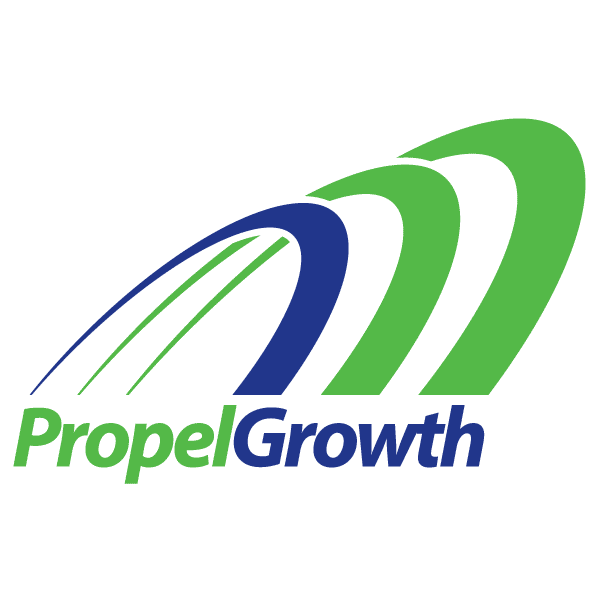![]()

The following is a guest post by Emilie Totten, Head of Marketing at Synthesis Technology.
(updated October 23, 2019).
Have you ever had to create buyer personas for the financial industry? This was one of my biggest priorities after being hired as head of marketing for Synthesis Technology, a financial services technology firm that automates factsheets and pitchbooks for investment companies. As a “newbie” to the investment management industry, I was amped up for the challenge but had no idea how difficult it would be to identify, attract, and engage a financial services audience.
There’s one thing I learned right away – the financial services industry is a beast! It encompasses a broad range of organizations that manage money including banks, credit card companies, insurance companies, stock brokerages, investment funds, real estate funds, and the list goes on.
As any marketer should, I spent my first few weeks developing my buyer personas. Initially, I did this by conducting interviews with clients and key persons within our organization, observing during product demos, and researching my target audience and key influencers on social media. Based on my findings, I began creating content with the goal of building an audience and driving qualified leads.
After about six months, a few key problems and more questions emerged:
- Not enough original ideas – How can we create more of the right content? How can we stand out and say something new?
- Not enough engagement – How do we get people to like, comment, and share our content?
- Not enough leads – How do we get visitors to convert into qualified leads?
- Not enough closed deals – How do we develop content that facilitates the buying cycle?
In order to answer these questions, it was clear that I needed to do a deeper dive into our buyer personas. A more thorough understanding of our buyers was going to be the key to really dialing-in our content strategy. The following post is a play-by-play of my approach and meant to be a handy guide for anyone who needs some guidance while going through this process.
Buyer Persona Development for Financial Services is Complex
There are a lot of factors to consider when developing truly useful buyer personas for financial services. And, unfortunately, it takes a lot of work. I realized that in order to really get inside the head of my buyers I needed to to find out:
- What types of financial services companies buy our technology?
- What types of people within those companies participate in the buying process?
- What information do these stakeholders need in order to make a buying decision?
In order to get the right perspective, I took a very strategic approach the second time around.
Tactic #1: Understanding the Companies That Buy
Because “financial services” is so broad, I wanted to first understand the kinds of companies that buy our technology. Here was my strategy:
First, I looked at the types of companies that use our software and services. I created a spreadsheet and listed all of our current clients and current sales qualified leads by company name. I conducted research on each company to understand what type of financial products or services they offer. Are they a mutual fund company? TAMP? Wealth manager? Hedge Fund? Investment bank? By associating each company with a firm “type”, I started to identify what kinds of companies I should be targeting within the financial services sector.
Next, I looked at company size. I added a column to record the size of each company and designated each firm as a small, medium, or large based on assets under management (AUM). The point here was to start identifying any trends with regard to the size of firm that buys our services.
Next, I looked at the end customer. I created another column in my master spreadsheet to record the end customer. In other words, who are the end buyers at these companies? Are they personal investors (retail)? Institutions? Financial advisors? Sophisticated Investors? By understanding who buys from our clients, I got a better understanding of our clients’ marketing challenges and how our software might help them.
Next, I looked at how these companies access their market. I wanted to understand which marketing and sales channels these firms use to engage with their customers. Are they selling direct or through intermediaries and financial advisors? And what types of financial advisors? The point here was to understand how our software will enable them to market and sell through their channels.
Last, I took note of how each firm is regulated. Are they governed by FINRA or the SEC? I did some research to identify challenges brought on by regulations like AIFMD, Dodd-Frank, Form PF, EMIR, and Solvency II. Compliance is a key driver to technology purchases, so I wanted to understand how this might affect the buying process.
Tactic #2: Understanding the People Who Buy
After I understood the type of companies that buy, I wanted to understand the people at those companies who take part in the purchasing decision. Here was my strategy:
First, I interviewed our sales people. I took a representative sample of firms from the company list I created and set up interviews with the sales team to discuss them. The idea was to get their perspective on the buying process. Here are the questions I asked in these interviews with our sales team:
- What does this company do and what is their business goal?
- What are their key pain points?
- What key obstacles are contributing to these pain points?
- Who got us in the door?
- Who came to the meetings?
- Who signed the contract?
- Who are the users?
- Who was involved in the implementation?
- How do they describe the technology/solution to colleagues internally?
- How did they find us?
- Where did they look to gain more insight into their problem/pain points?
- Who else was affected and how?
- Who did they have to convince, and how did they go about it?
- What kinds of questions/objections came up during the evaluation/decision process?
The answers gave me a ton of insight I didn’t have before and helped me identify who I needed to interview on the client side.
Next, I interviewed more clients. The interviews with the sales team helped me identify key stakeholders in marketing, sales, and compliance at our clients. I set up interviews with many of these stakeholders to ask similar questions to the ones outlined above.
There are a couple of key things that I did differently in my client interviews the second time around. First, I approached the conversation with some background information I learned from my conversations with the salespeople. This helped me frame my questions more intelligently. It also allowed me to validate my findings and really dig beneath the surface to uncover more about their key pain points.
I also recorded every interview (off-the-record and protected under our non-disclosure agreements). This was an absolute game-changer. I was able to focus on having a conversation, rather than taking notes. Then I sent the recording out for transcription. This helped tremendously when it came time to develop content, as I could use the exact words from a buyer persona’s mouth.
I also realigned with the sales team after the client interviews. By recapping my conversations with our sales team, it helped to close the gap between their perceptions of the sales process and the clients’.
Next, I researched the leads in our pipeline. I took a look at our current lead pipeline and did a little research on each sales qualified lead (SQL) by looking at social media and thought leadership content. With regard to social, I focused on LinkedIn and Twitter. LinkedIn is great for identifying how that person describes him or herself and their role within their firm. It’s also a great place to engage with leads. If any of our prospects are publishing content or being quoted in the press, I make sure to comment on their posts. If they are on Twitter, I followed them and engage when it makes sense.
Next (and this one is really important), I interviewed the people who didn’t buy. Losing a deal in the late stages of the buying process is a huge let-down. However, not all is lost if you can get feedback from the buyer on what went wrong. This is a great way to spot any gaps in your content, lead nurturing and sales strategies. Getting feedback soon after the deal falls through is important; however, because the details are still fresh in the buyers’ mind.
Putting It All Together: The Big Picture
After compiling all of this data, I started putting the pieces together to get to “the big picture”. I did this by mapping each client or SQL to their company and then creating a detailed profile for each buyer persona.
Within 12 months of revising our buyer personas, we saw notable improvements in our content performance, volume of qualified inbound leads, sales pipeline health, and close rate.
We must truly understand our target buyers before we can put ourselves in their shoes. And using that understanding to develop complete buyer personas is essential to an effective content and marketing strategy. It takes a lot of hard work, follow-thru, and analysis, but it’s worth the effort. I hope this guide is helpful to you as you develop your own buyer personas for a financial services audience. Good luck!
What challenges have you encountered while developing your buyer personas? How did you overcome them? I’d love to hear your comments. Thanks for reading.
Explore This Topic Further
- Uncover the real buying committee in this loss analysis case study.
- Dig more into how to create actionable buyer personas.
- Download a buyer persona template.






